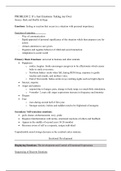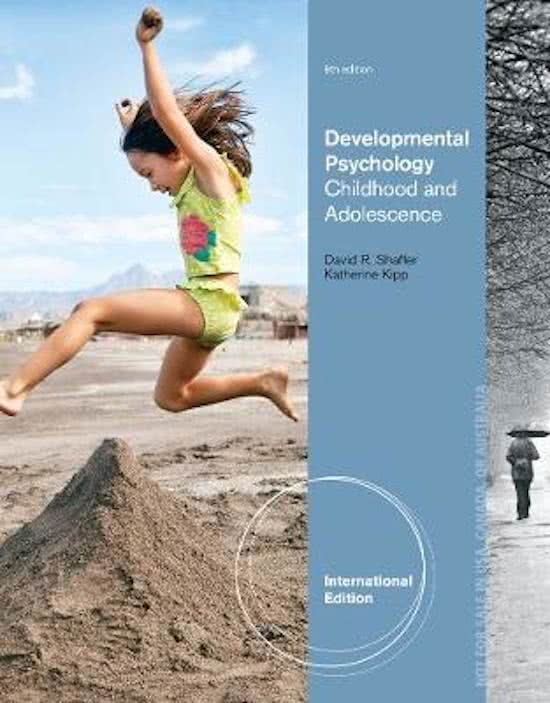PROBLEM 2: It’s Just Emotions Taking me Over
Source: Berk and Shaffer & Kipp
Emotions: feeling or reaction that occurs in a situation with personal importance.
Function of emotion:
- Way of communication
- Rapid appraisal of personal significance of the situation which then prepares you for
action
- Attracts attention to care givers
- Organize and regulate behavior of child and social interaction
- Adaptation to social world
Primary/ Basic Emotions: universal in humans and other animals
• Happiness:
o smiles, laugher. Smile encourages caregivers to be affectionate which causes
baby to smile even more.
o Newborn babies- smile when full, during REM sleep, response to gentle
touches and sounds, and mothers voice.
o End of first month- babies smile at eye catching sights such as bright objects
• Interest, surprise
• Anger and sadness:
o respond due to hunger, pain, change in body temp, too much/little stimulation.
o 4 months- 2 years old: anger expressions increase in frequency and intensity
• Disgust
• Fear:
o rises during second half of first year.
o Stranger anxiety- babies and toddlers tend to be frightened of strangers
Secondary/ Self-conscious emotions:
• guilt, shame, embarrassment, envy, pride
• Requires familiarization with norms, emotional reactions of others and feedback
• Appear in the middle of second year (18-24 months)
• Becomes aware of self as a separate, unique individual
Unpredictable mood swings decrease as the cerebral cortex matures.
Emotional Development
Displaying Emotions: The development and Control of Emotional Expressions
Sequencing of Discrete Emotions
, At birth:
show interest, distress, disgust, contentment
End of Second month:
social smiles (caregivers who most likely smile back)
2-7 months:
Basic emotions- anger, sadness, joy, surprise, fear
Displayed and interpreted similarly in all cultures
2nd year:
Complex emotions: embarrassment, shame, guild, envy, pride
Self-conscious emotions- involves some damage to or enhancement of our sense of
self
Self-evaluative emotions: require self-recognition and understanding of rules or
standards
How parents react to transgressions determines which emotions children feel: guilt or
shame
THEORIES:






